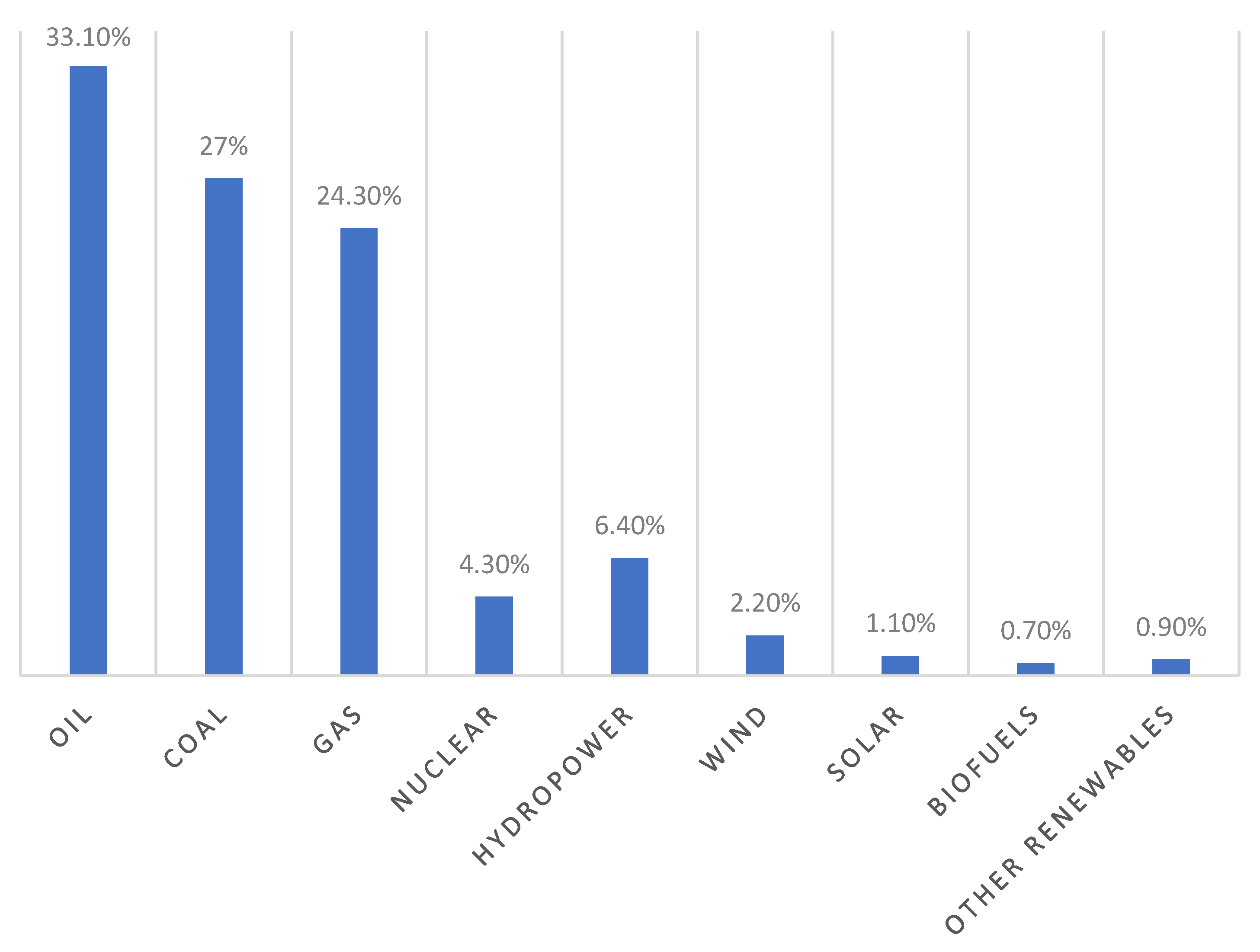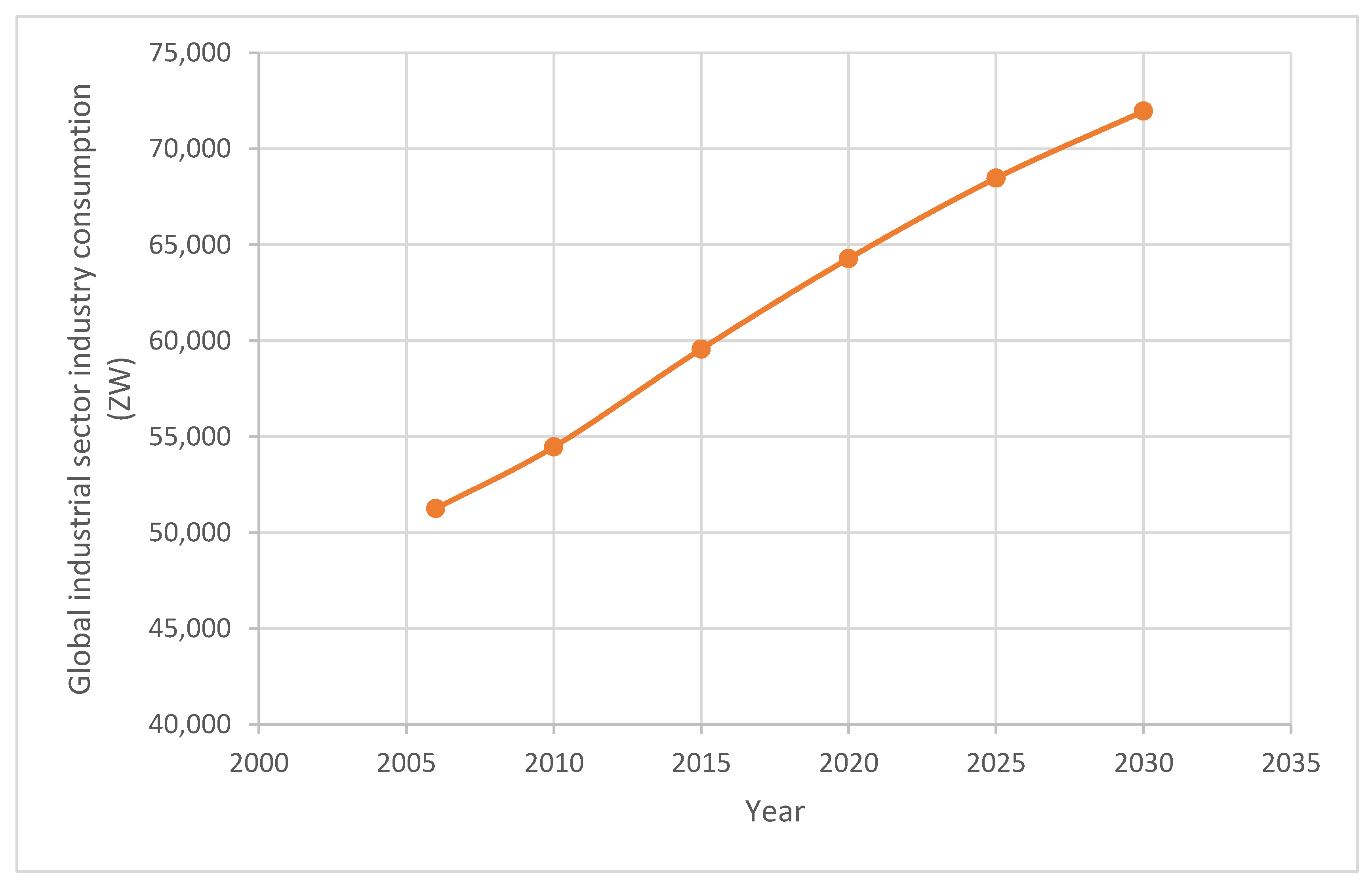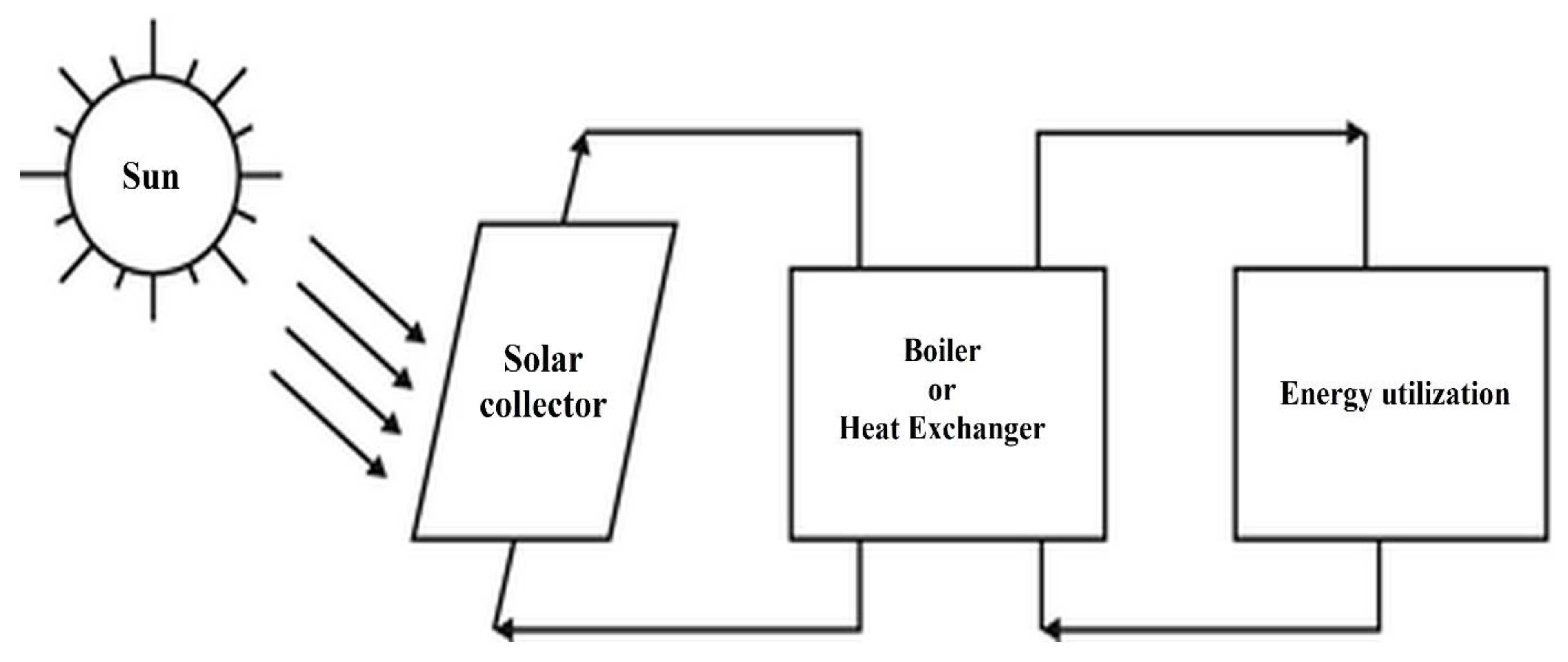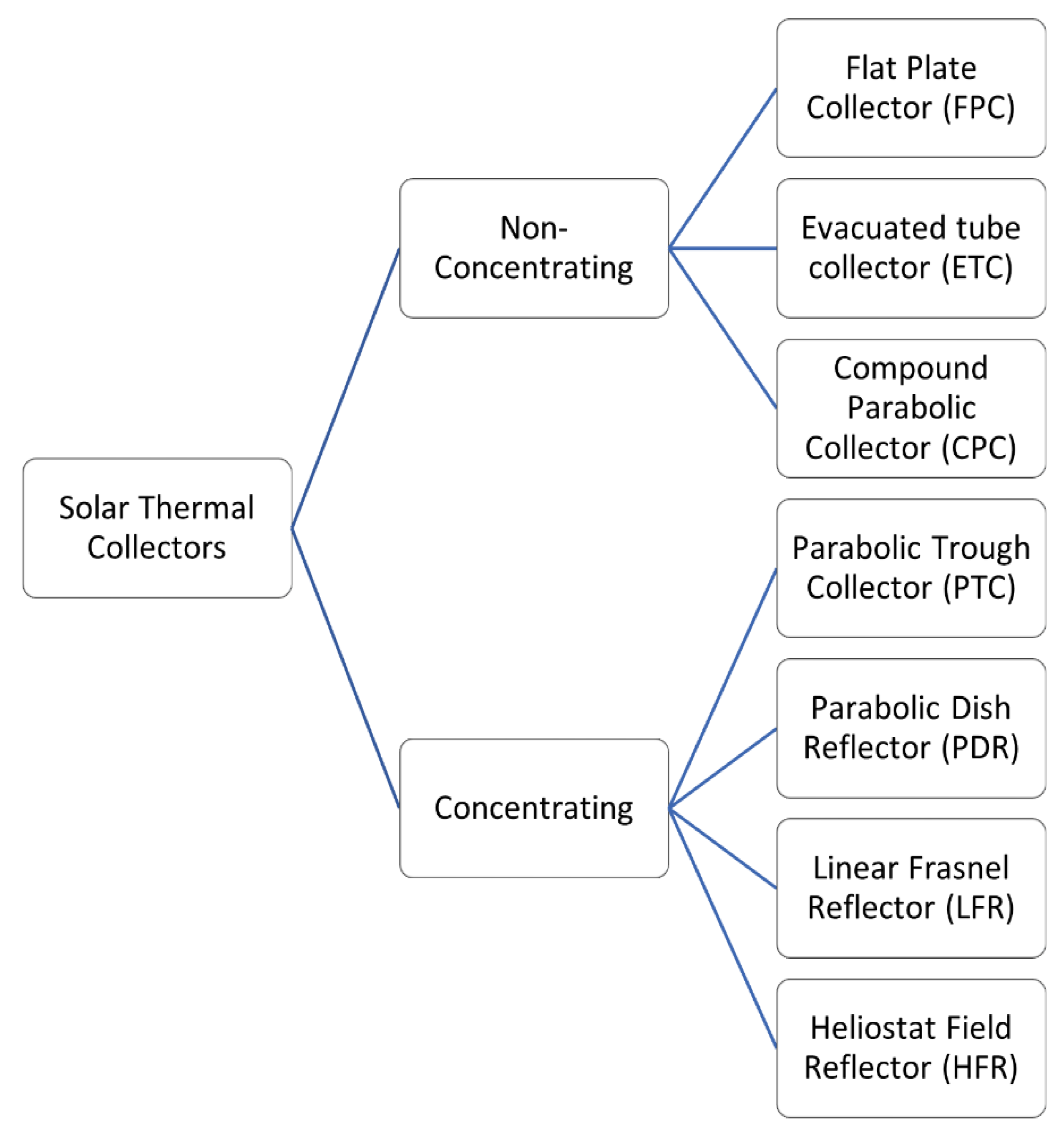Your browser does not fully support modern features. Please upgrade for a smoother experience.

Submitted Successfully!
Thank you for your contribution! You can also upload a video entry or images related to this topic.
For video creation, please contact our Academic Video Service.
| Version | Summary | Created by | Modification | Content Size | Created at | Operation |
|---|---|---|---|---|---|---|
| 1 | Junaid Ahmed | -- | 2081 | 2022-11-29 06:58:09 | | | |
| 2 | Dean Liu | Meta information modification | 2081 | 2022-11-30 03:28:06 | | |
Video Upload Options
We provide professional Academic Video Service to translate complex research into visually appealing presentations. Would you like to try it?
Cite
If you have any further questions, please contact Encyclopedia Editorial Office.
Kumar, L.; Ahmed, J.; Assad, M.E.H.; Hasanuzzaman, M. Solar Thermal for Process Heating. Encyclopedia. Available online: https://encyclopedia.pub/entry/37009 (accessed on 12 January 2026).
Kumar L, Ahmed J, Assad MEH, Hasanuzzaman M. Solar Thermal for Process Heating. Encyclopedia. Available at: https://encyclopedia.pub/entry/37009. Accessed January 12, 2026.
Kumar, Laveet, Junaid Ahmed, Mamdouh El Haj Assad, M. Hasanuzzaman. "Solar Thermal for Process Heating" Encyclopedia, https://encyclopedia.pub/entry/37009 (accessed January 12, 2026).
Kumar, L., Ahmed, J., Assad, M.E.H., & Hasanuzzaman, M. (2022, November 29). Solar Thermal for Process Heating. In Encyclopedia. https://encyclopedia.pub/entry/37009
Kumar, Laveet, et al. "Solar Thermal for Process Heating." Encyclopedia. Web. 29 November, 2022.
Copy Citation
To mitigate the consequences of climate change, there is an increasing need to minimize the usage of fossil fuels, especially in the industrial sector because the majority of the industrial sector primarily rely on fossil fuels to meet their needs for heat energy, and a practical strategy to reduce reliance on fossil fuels is to use energy from the sun.
solar thermal energy
solar thermal technologies
solar collectors
1. Introduction
Globally, for any nation to expand, modernize, and experience economic growth in the industrial sphere, energy is both a key requirement and a necessity. Since industrialization, there has been a significant change in the energy system. As people become wealthier and demographics rise, there is an increase in the need for energy in many nations around the world. In the absence of any increase in energy efficiency, this excess demand will result in an annual growth in our worldwide consumption of energy [1]. Figure 1 [1] shows the consumption of different resources on a global scale in 2019. Just 15.7% of primary energy worldwide in 2019 originated from low-carbon (nuclear and renewable) sources. The objective of switching to a low-carbon power system is far from being achieved. Since the 1990s, the rate of progression has been less remarkable. By 1994, 13.5% of our energy came from low-carbon sources. Only 2 percentage points have been added to this in 25 years. Although it is moving correctly, it is doing so much too slowly, perhaps much slower than most people anticipate [1]. The industrial sector has a substantial influence on the world economy [2]. However, the problem remains how to fulfil the forthcoming thermal energy necessities for satisfying the energy insistence of the industrial sector because of the significant rise in worldwide energy demands. Particularly, the industrial sectors consume 32–35% of total global energy [3]. The average data for energy intake in the industrial sector depicts the usage to be around 35% of the global energy [4]. Global energy is under increasing pressure because of the accelerating economic and demographic growth. Due to excessive use, the principal energy sources such as fossil fuels are beginning to exhaust as demand for energy rises. Along with a risk of potential economic meltdown, the continuous use of fossil fuels is also harming the environment, over the past decade global warming has increased drastically [5]. Fossil fuels predominate in the energy mix of the industries. Therefore, it is crucial to minimize fossil use and still meet the expanding energy demands of industry to promote intergenerational equality and lower greenhouse gas emissions [6]. Researchers S. Mekhilef, R. Saidur and A. Safari forecasted the industrial energy growth till 2030 and it is apparent in Figure 2 that this trend of increasing demand in the industrial sector will continue in the future [7]. As the effects of climate change start to be felt around the world, the need to adopt renewable energy technology is becoming increasingly crucial. The power generation industry has been the main target of efforts to deploy more renewable energy sources in place of conventional fossil fuel power plants. In the USA, the sector that produces electric power had a five-fold rise in renewable energy generation from 2009 to 2018 [8]. Other countries around the world are also adopting the renewable energy but only for power generation. Despite the inclining adoption of renewables in electrical power sector, most of the process thermal energy in industries is still produced through the burning of fossil fuels. The industrial sector in the America utilized 33% of the nation’s net energy in 2020, and fossil fuel combustion accounted for 78.5% of that energy [9]. Additionally, it should be remembered that petroleum and natural gas products account for about 80% of all energy use [10]. Therefore, the adoption of renewable energy resources on a global scale for process heating and other industrial application is crucial.

Figure 1. Global resource usage in 2019 [1].

Figure 2. Global projections for industrial sector consumption [7].
Solar energy has the highest potential of all available renewables, it generates clean energy that is not harmful to the environment while it is being used. Several solar conversion devices can convert solar radiation into heat or electrical energy. Photovoltaic cell (PV) and solar thermal systems are two large categories of solar energy conversion technologies. Solar thermal systems turn solar radiation into heat, whereas solar PV systems directly convert solar energy into electricity. Systems for converting solar energy to heat typically have a substantially better conversion efficiency than systems for converting solar energy to electricity [11]. Fossil fuels are burned to provide process heat for industries, which results in GHG emissions and environmental degradation, solar energy systems represent a sustainable alternative for the future [12]. Installing such a system will move enterprises toward a future of zero carbon emissions because solar energy is widely available.
2. Heating for Industrial Processes and Solar Thermal Energy
The energy obtained via the conversion of sunlight into heat is called solar thermal energy. A solar collector is used to collect solar radiation for solar thermal conversion systems shown in Figure 3. These radiations may be employed for industrial purposes or saved for later use to directly heat water or air for heating purposed in the residential or commercial sector. Process heating systems in general comprise of a heating unit that generates and supplies heat as well as a circulation system for moving thermal energy to the final use [2]. The process heating is implemented via either direct or indirect mode [13]. In a direct scenario, heat is produced by the substance itself. Alternatively, in indirect systems, by means of one or many heat transfer mechanisms, heat is transferred from another source to the substance.

Figure 3. Systems to convert sunlight to heat.
Research shows that more than half of the process heating happens under 250 °C, which lies exactly under the applicability of solar thermal collectors [14]. Utilizing thermal energy from the sun to heat industrial processes has several benefits. In addition to reducing GHG emissions, it lessens reliance on fossil fuels. However, integration of this heat into diverse processes of industries and choosing an effective solar thermal collector is challenging. An appropriate industrial method where thermal energy of sun can be used either regionally or globally has been identified through several studies. Additionally, a lot of academics have shown how to integrate solar heat into industrial processes using the right solar thermal collector. In research [15], the issues associated with the rise of solar thermal technologies in the ASEAN countries are discussed. To reflect the region, the heat requirements for Malaysia’s main industrial sectors are also analyzed. The research also offers an industry perspective on the technical expertise and awareness needed to successfully adopt solar thermal technology in industry. The effectiveness of the collector and the heat removal factor were considerably impacted by the concentration ratio, flow rate of the fluids, and surface area [16]. Research [17] concludes that installing evacuated solar collectors in industrial processes appears to be the most advantageous solution supporting the core of this review.
Large scale studies of solar thermal process heating have been carried out to show the practicality of this system. Ref. [18] carried an analysis of a 5MW solar collector-based plant for process heating. The researcher used parabolic trough collector (PTC) to achieve process heating for a plant in lake city Utah and concluded that using parabolic trough collector system could reduce annual emissions of CO2 by 3,582,422.47 kg as compared to a natural gas-based plant. Additionally, approximately $99,900 and $357,004 in yearly external cost reductions were achieved [18]. Another researchers [19] investigated the adoption of Solar IPH and complementary solar thermal energy technologies in China and listed the top 10 potential industrial sectors. They anticipated that China would reduce its CO2 emissions by 98.22 MT and a minimum 39.40 MT of coal commensurate by 2020. Researchers [20] did a comprehensive overview of different sectors in Switzerland. The traditional solar thermal systems have a significant potential to provide process heat for Swiss industry. Research lists the best industrial sectors for implementing solar thermal systems, the best techniques, and the places where such installations are most likely to occur. Because of their significant energy consumption for process heating and high proportion of low working temperatures, the food, fabric and apparel, paper, chemical, and medicinal sectors are found to be intriguing for the deployment of solar thermal systems. Together, these four industrial sectors in Swiss industry required 33PJ heat in 2016 for process heating, accounting for about 21% of total energy production in country. Another large scale study [21] developed the mathematical structure of solar IPH for Germany’s most viable industrial sectors and came to the conclusion that by incorporating solar IPH into German enterprises, approximately a demand of 3.4% or 16 TWh of the heating load could be satisfied. A study on the integration of parabolic trough collectors to the industry for process heating reported a decrease in the levelized cost of the heat from $34.10/MWhth to $31.83/MWhth [22]. The same research also reported a decrease of 22.2% in GHG emissions [22]. Analyzing the results of given four large scale studies show that solar thermal technology holds an immense potential to assist industrial process heating on a global scale.
There also have been numerous studies regarding the feasibility and characteristic mapping of solar thermal technology. Researchers [23] evaluated the viability of solar-powered process heating applications and discovered that flat-plate collectors offer the lowest cost to generate heat by solar for operating temperatures below 60 °C, while ETC reflectors are more economically viable at temperatures above about 70 °C. For all of Madrid’s examined inlet temperatures, industrial solar heating systems are practical. Applications for solar process heat in Würzburg with intake temperatures under 60 °C are economically viable. Researchers [12][24] compared the outcomes of systematic reviews of ten other nations to the Australian case study. The researchers evaluated various industries in the selected countries and suggested suitable SHIP plant. Another study by [25] demonstrates the dependability and effectiveness of three different collector systems that are appropriate for providing industrial process heat in various climatic locations. Two distinct types of collectors were discussed based on their application as a function of location. The flat plate collectors achieved 95 °C in European climate and concentrating collectors achieved supply temperatures b/w 160 °C to 250 °C. Process heating system with solar assistance was examined by a researcher [26]. Process heating was produced with the least amount of fossil fuel use possible by combining a PV and a solar thermal collector system. According to the findings. Performance mapping demonstrates that the SAPH system operates more effectively at higher radiation levels and lower mass flow rates. These studies point out the viability of different types of solar thermal collectors under specific application temperature and flow requirements. These studies can assist the selection of appropriate technology for process heating in industrial sector.
PV systems based heating also present a great alternative to fossil fuel based process heating. However, Ref. [27] analyzed the costs of photovoltaic and solar thermal systems for process heating. It was concluded in the research that the solar thermal systems deliver cheaper and more cost-effective energy than PV installed systems.
3. Current Global Technologies of Solar Thermal Energy
With the advancement of contemporary science over the past ten years, many solar energy (SE) technologies have been launched at greatly varying costs. The enormous need for energy to be used for economic development, coupled with the rising cost of fossil fuels, is a pressing issue on a global scale [28]. The energy consumption is always rising, yet conventional sources have limited supplies [29]. Sunlight is arguably the most potent energy source that Earth receives, and it comes from the Sun. sunlight can be harvested as Solar thermal energy, electrical energy, or a combination of the two [30]. Photovoltaic cells are an efficient and environmentally friendly way to turn solar energy into electric energy. However, about 15–20% of solar radiation, depending on PV mechanization, is believed to be converted into electricity by solar photovoltaic cells, making them an extremely inefficient source of electrical energy [31][32]. Contrastingly, solar thermal collectors directly convert the solar energy into heat that is fed to the working fluid. Additionally, the integrated systems, such as solar concentrated photovoltaic thermal, also known as CPVT, and photovoltaic thermal (PVT) are developing technologies. Although compared to separate PV or STCs systems, an integrated collectors have far higher electrical and thermal outputs but still these systems are limited to research only. There is ongoing research being done on these integrated systems to assess their feasibility in real world conditions. Therefore, they are not viable for global adoption at this moment. There are many different solar thermal collectors on the market and Figure 4 lists a variety of different types. This portion of the study provides an overview of the solar thermal collector types and their development worldwide.
References
- Ritchie, H.; Roser, M.; Rosado, P. Energy. Available online: https://ourworldindata.org/energy (accessed on 18 October 2022).
- Sharma, A.K.; Sharma, C.; Mullick, S.C.; Kandpal, T.C. Solar industrial process heating: A review. Renew. Sustain. Energy Rev. 2017, 78, 124–137.
- Abdelaziz, E.A.; Saidur, R.; Mekhilef, S. A review on energy saving strategies in industrial sector. Renew. Sustain. Energy Rev. 2011, 15, 150–168.
- Kumar, L.; Hasanuzzaman, M.; Rahim, N. Global advancement of solar thermal energy technologies for industrial process heat and its future prospects: A review. Energy Convers. Manag. 2019, 195, 885–908.
- Mostakim, K.; Hasanuzzaman, M. Global prospects, challenges and progress of photovoltaic thermal system. Sustain. Energy Technol. Assess. 2022, 53, 102426.
- Zeng, J.; Liu, L.; Liang, X.; Chen, S.; Yuan, J. Evaluating fuel consumption factor for energy conservation and carbon neutral on an industrial thermal power unit. Energy 2021, 232, 120887.
- Mekhilef, S.; Saidur, R.; Safari, A. A review on solar energy use in industries. Renew. Sustain. Energy Rev. 2011, 15, 1777–1790.
- Koebrich, S.; Bowen, T.; Sharpe, A. 2018 Renewable Energy Data Book. Available online: https://www.nrel.gov/analysis/energy-data-books.html (accessed on 20 October 2022).
- EIA. Use of Energy in Industry; U.S. Energy Information Administration: Washington, DC, USA, 2021.
- Stryi-Hipp, G. (Ed.) Introduction to renewable heating and cooling. In Renewable Heating and Cooling; Woodhead Publishing: Cambridge, UK, 2016; pp. 1–5.
- Kumar, K.R.; Chaitanya, N.K.; Kumar, N.S. Solar thermal energy technologies and its applications for process heating and power generation—A review. J. Clean. Prod. 2020, 282, 125296.
- Farjana, S.H.; Huda, N.; Mahmud, M.P.; Saidur, R. Solar industrial process heating systems in operation—Current SHIP plants and future prospects in Australia. Renew. Sustain. Energy Rev. 2018, 91, 409–419.
- Zuberi, M.J.S.; Olsen, D.; Liem, P.; Wellig, B.; Patel, M.K. Heat integration of a multi-product batch process by means of direct and indirect heat recovery using thermal energy storage. Appl. Therm. Eng. 2019, 167, 114796.
- Karki, S.; Haapala, K.R.; Fronk, B.M. Technical and economic feasibility of solar flat-plate collector thermal energy systems for small and medium manufacturers. Appl. Energy 2019, 254, 113649.
- Ismail, M.I.; Yunus, N.A.; Kaassim, A.Z.M.; Hashim, H. Pathways and challenges of solar thermal utilisation in the industry: ASEAN and Malaysia scenarios. Sustain. Energy Technol. Assess. 2022, 52, 102046.
- Islam, M.K.; Hasanuzzaman, M.; Rahim, N.A. Modelling and analysis of the effect of different parameters on a parabolic-trough concentrating solar system. RSC Adv. 2015, 5, 36540–36546.
- Farjana, S.H.; Mahmud, M.; Huda, N. Solar process heat integration in lead mining process. Case Stud. Therm. Eng. 2020, 22, 100768.
- Mohammadi, K.; Khanmohammadi, S.; Immonen, J.; Powell, K. Techno-economic analysis and environmental benefits of solar industrial process heating based on parabolic trough collectors. Sustain. Energy Technol. Assess. 2021, 47, 101412.
- Jia, T.; Huang, J.; Li, R.; He, P.; Dai, Y. Status and prospect of solar heat for industrial processes in China. Renew. Sustain. Energy Rev. 2018, 90, 475–489.
- Guillaume, M.; Bunea, M.S.; Caflisch, M.; Rittmann-Frank, M.H.; Martin, J. Solar Heat in Industrial Processes in Switzerland—Theoretical Potential and Promising Sectors. In Proceedings of the International Conference on Solar Energy for Buildings and Industry (EuroSun 2018), Rapperswil-Jona, Switzerland, 10–13 September 2018.
- Vajen, K.; Lauterbach, C.; Schmitt, B. Solar heat for industrial processes—Potential, technologies and applications. In Proceedings of the International Conference on Solar energy for MENA region (INCOSOL), Amman, Jordan, 22–23 October 2012.
- Immonen, J.; Powell, K.M. Dynamic optimization with flexible heat integration of a solar parabolic trough collector plant with thermal energy storage used for industrial process heat. Energy Convers. Manag. 2022, 267, 115921.
- Lauterbach, C.; Schmitt, B.; Vajen, K. Feasibility Assessment of Solar Process Heat Applications. In Proceedings of the ISES Solar World Congress, Kassel, Germany, 28 August–2 September 2011.
- Farjana, S.H.; Huda, N.; Mahmud, M.P.; Saidur, R. Solar process heat in industrial systems—A global review. Renew. Sustain. Energy Rev. 2018, 82, 2270–2286.
- Pietruschka, D.; Fedrizzi, R.; Orioli, F.; Söll, R.; Stauss, R. Demonstration of Three Large Scale Solar Process Heat Applications with Different Solar Thermal Collector Technologies. Energy Procedia 2012, 30, 755–764.
- Kumar, L.; Hasanuzzaman, M.; Rahim, N.; Islam, M. Modeling, simulation and outdoor experimental performance analysis of a solar-assisted process heating system for industrial process heat. Renew. Energy 2021, 164, 656–673.
- Meyers, S.; Schmitt, B.; Vajen, K. Techno-Economic Comparison of Solar Thermal and PV for Heat Generation in Industrial Processes. In Proceedings of the ISES Solar World Congress 2015, Daegu, Korea, 8–12 November 2015; pp. 1–10.
- Mohammed, A.; El Khashab, H. Solar Energy Technology Choice Development. E3S Web Conf. 2018, 64, 02003.
- Gareiou, Z.; Drimili, E.; Zervas, E. Public acceptance of renewable energy sources. In Low Carbon Energy Technologies in Sustainable Energy Systems; Kyriakopoulos, G.L., Ed.; Academic Press: Cambridge, MA, USA, 2021; pp. 309–327.
- Habchi, A.; Hartiti, B.; Labrim, H.; Fadili, S.; Benyoussef, A.; Belouaggadia, N.; Faddouli, A.; Ertuğrul, M.; Benaissa, M.; Ntsoenzok, E. Feasibility and Thermal/Electrical performance study of two smart hybrid systems combining parabolic trough collector with tubular thermoelectric generator. Energy Rep. 2021, 7, 1539–1559.
- Nahar, A.; Hasanuzzaman, M.; Rahim, N.; Parvin, S. Numerical investigation on the effect of different parameters in enhancing heat transfer performance of photovoltaic thermal systems. Renew. Energy 2019, 132, 284–295.
- Rahman, M.; Hasanuzzaman, M.; Rahim, N. Effects of various parameters on PV-module power and efficiency. Energy Convers. Manag. 2015, 103, 348–358.
- Tyagi, V.; Kaushik, S.; Tyagi, S. Advancement in solar photovoltaic/thermal (PV/T) hybrid collector technology. Renew. Sustain. Energy Rev. 2012, 16, 1383–1398.
More
Information
Subjects:
Energy & Fuels
Contributors
MDPI registered users' name will be linked to their SciProfiles pages. To register with us, please refer to https://encyclopedia.pub/register
:
View Times:
1.1K
Revisions:
2 times
(View History)
Update Date:
30 Nov 2022
Notice
You are not a member of the advisory board for this topic. If you want to update advisory board member profile, please contact office@encyclopedia.pub.
OK
Confirm
Only members of the Encyclopedia advisory board for this topic are allowed to note entries. Would you like to become an advisory board member of the Encyclopedia?
Yes
No
${ textCharacter }/${ maxCharacter }
Submit
Cancel
Back
Comments
${ item }
|
More
No more~
There is no comment~
${ textCharacter }/${ maxCharacter }
Submit
Cancel
${ selectedItem.replyTextCharacter }/${ selectedItem.replyMaxCharacter }
Submit
Cancel
Confirm
Are you sure to Delete?
Yes
No





